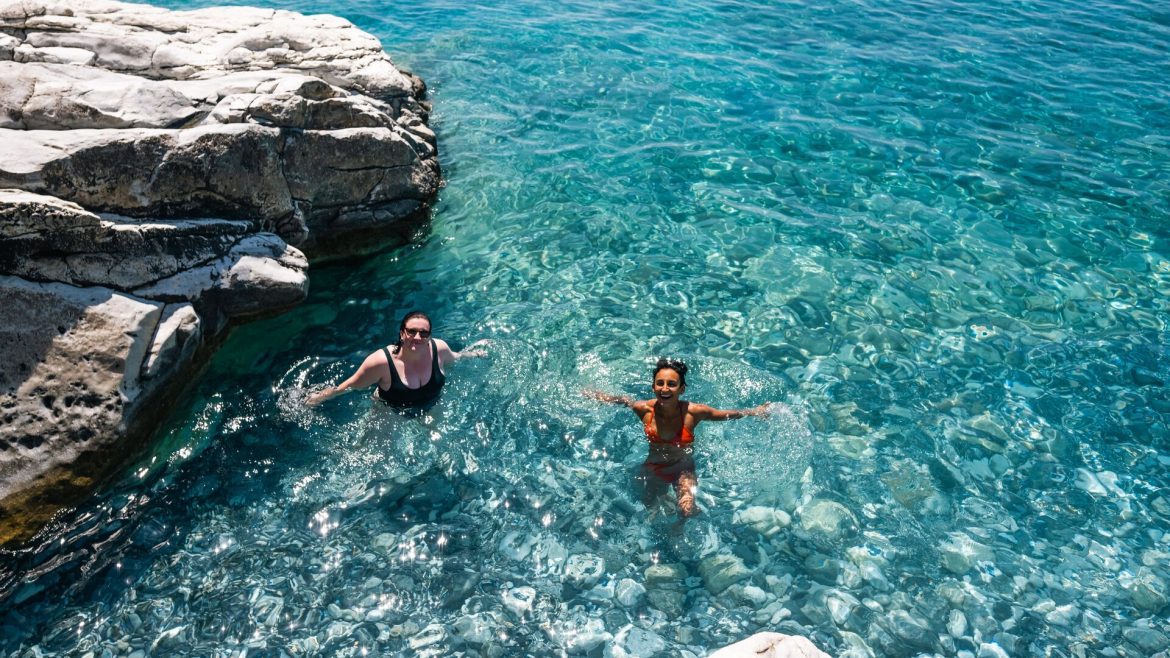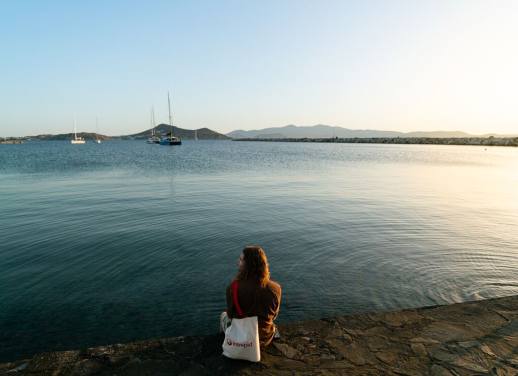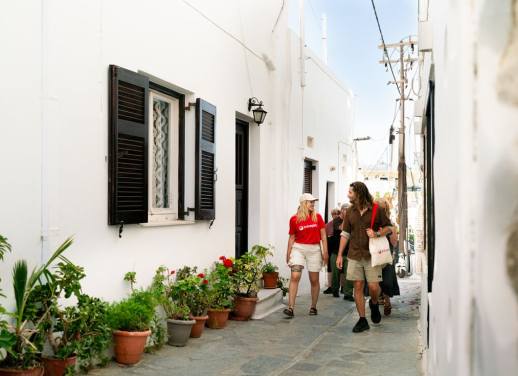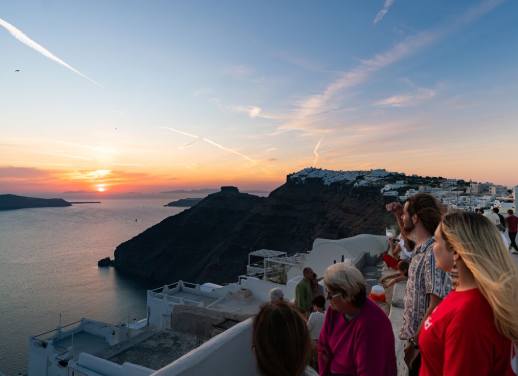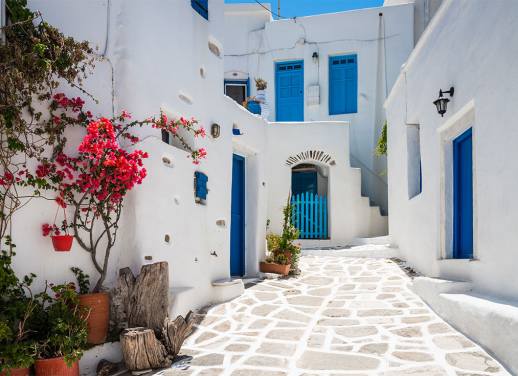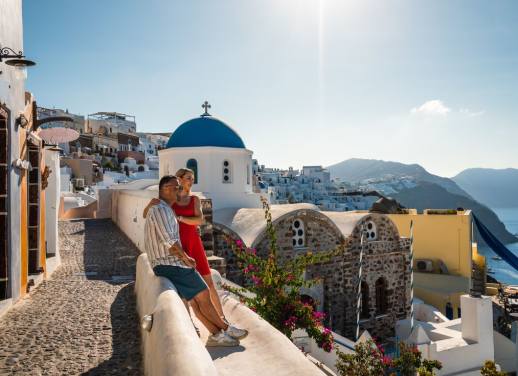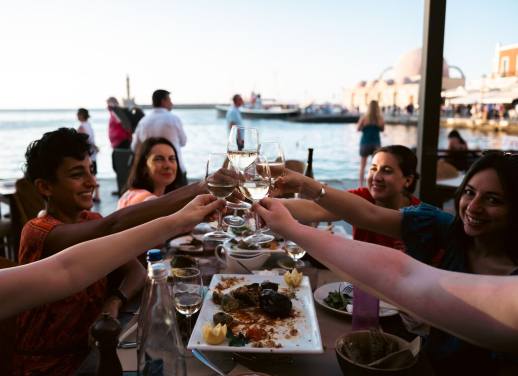Uncover secluded strips of sand strewn with shipwrecks, shallow waters shielding small fishing villages and scenic lagoons as writer Bex Shapiro shares Greece’s best beaches.
Ah, Greece. A land of ancient ruins, laidback living, and, of course, seriously photogenic beaches. However, with 227 inhabited islands and thousands of kilometres of coastline, narrowing down the ‘best’ is no easy feat. Honestly, in Greece, you’d struggle to find a beach you wouldn’t happily plonk yourself down on for hours.
Whether your ideal spot is a secluded cove only reachable by boat or a sandy strip of beach bars, there’s something here for every sunseeker.
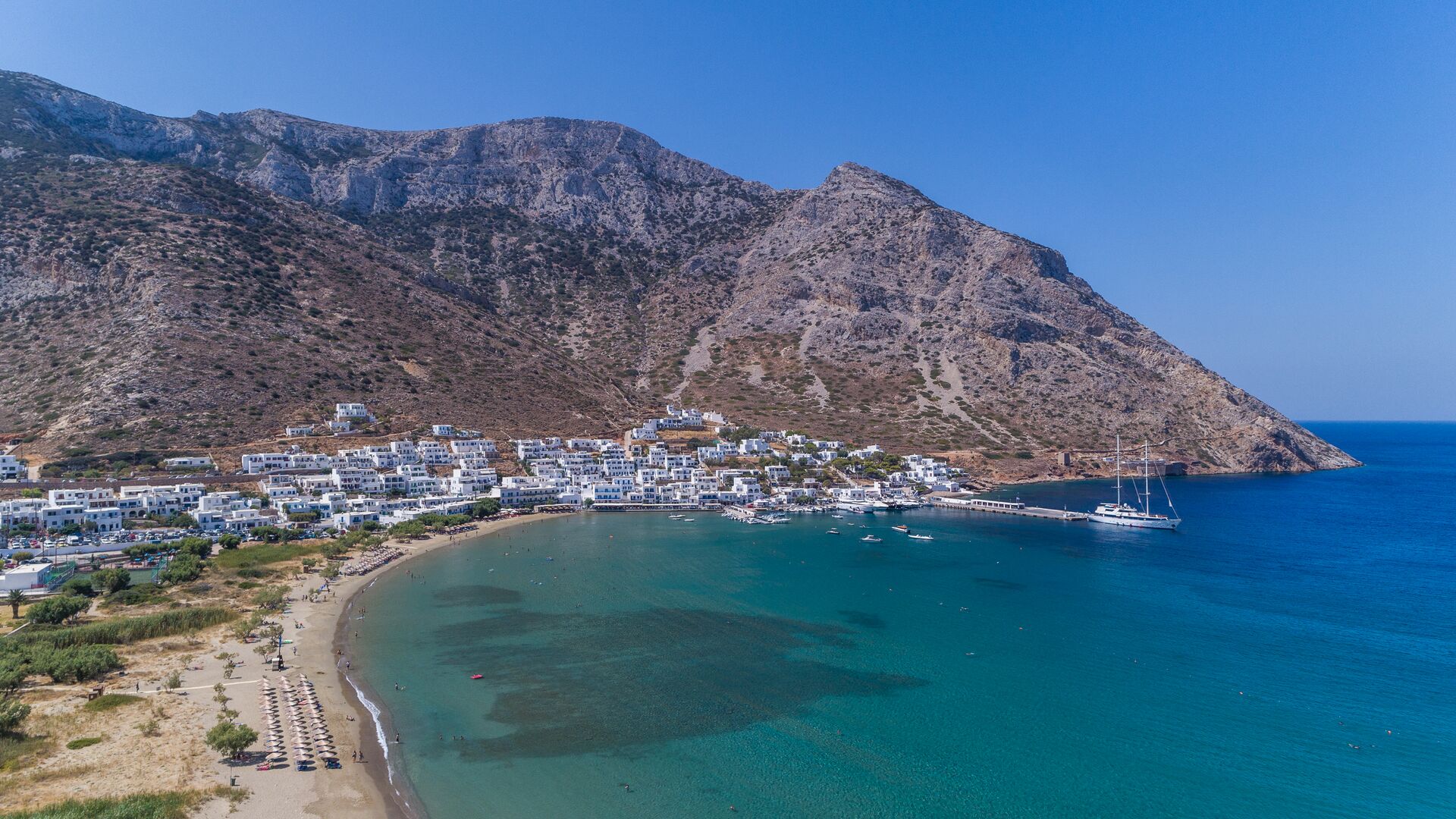
Faros Beach, Sifnos
Why we love the island: Sifnos might be one of the smaller Cyclades, but it packs in mountains, olive groves and sleepy villages in spades. It flies under the radar compared to heavyweights like Mykonos, making it ideal for experiencing a slice of authentic island life. You’d better come hungry too, as Sifnos serves up some of Greece’s tastiest food, with renowned dishes like revitha (chickpea stew), slow cooked in earthenware pots that are hand crafted on the island.
Why we love this beach: Set your phone to ‘do not disturb’ because Faros – a small fishing village on the southeast coast – was made for unwinding. The sand is soft, the shallow water is great for kids and the family run tavernas nearby are a perfect spot for tucking into grilled fish or seafood meze as the sun sets.
Mylopotas Beach, Ios
Why we love the island: Ios is quintessential Greece: blue-domed buildings, breezy beaches and sunsets that rival Santorini’s. It hums with backpackers in summer, but if you head outside Chora, the main town, you’ll find lowkey restaurants, traditional cubic villages and hikes that wind through family run farms and centuries-old terraces.
Why we love this beach: Sure, Mylopotas might be one of the island’s most popular beaches thanks to its proximity to Chora, but its blue water is worth braving the crowds for – though with 1.5 kilometres of sand, finding a spot shouldn’t be a problem.
Read more: Connecting with Crete’s traditions in the White Mountains
Balos Beach, Crete
Why we love the island: Greece’s largest island has it all: vineyards and olive groves, Minoan palaces, the longest gorge in Europe (Samaria Gorge), mountain hikes and, of course, countless beaches. After you roll off the sand, there are also plenty of lesser-known villages where you can experience classic Cretan food, music and traditions.
Why we love this beach: Balos Beach is in fact two sandbars reaching out across the Aegean, connecting the mainland with the uninhabited island of Gramvousa, home to a 16th-century castle. Between the two bars, a warm turquoise lagoon forms, creating one of the most photographed beaches in Greece.
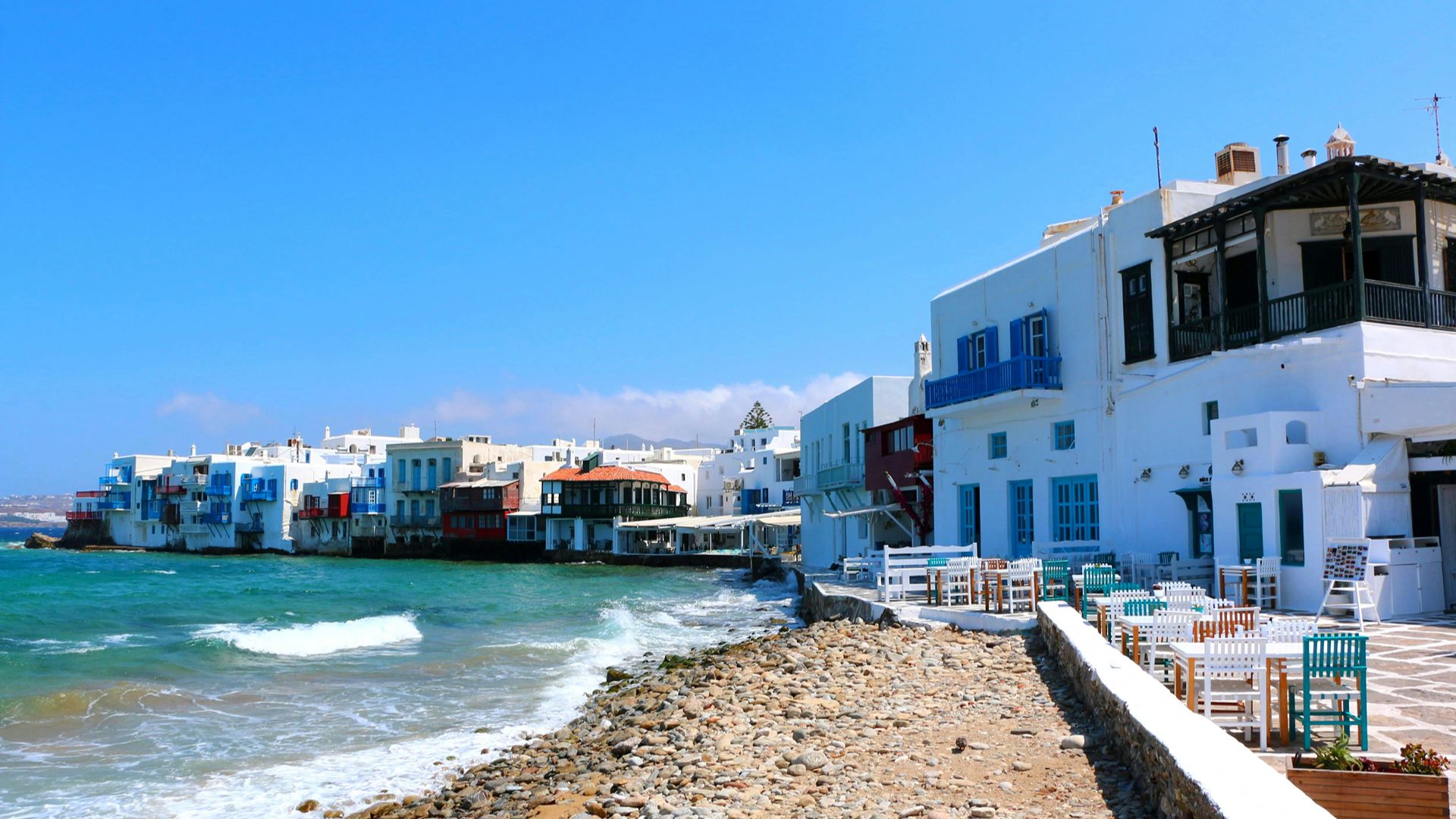
Super Paradise Beach, Mykonos
Why we love the island: Despite its glitzy reputation, Mykonos is down to earth at its core. The main town is full of galleries, old churches and restaurants, while the beaches cater to everyone from those chasing some R&R to those ready to party into the early hours. Mykonos also gets bonus points for being a short boat ride to Delos, the legendary birthplace of Apollo and Artemis and one of Greece’s most important archaeological sites.
Why we love this beach: Though crowded in peak season, Super Paradise Beach is a Mykonos icon. It became popular with free-spirited backpackers and artists in the early ’70s and was part of the broader bohemian travel wave. By day, laze on a sunbed or hit the water on a jet ski or stand-up paddle board, then head to a beach bar at sunset for cocktails and DJ sets.
Read more: How to avoid the crowds in Mykonos and Santorini
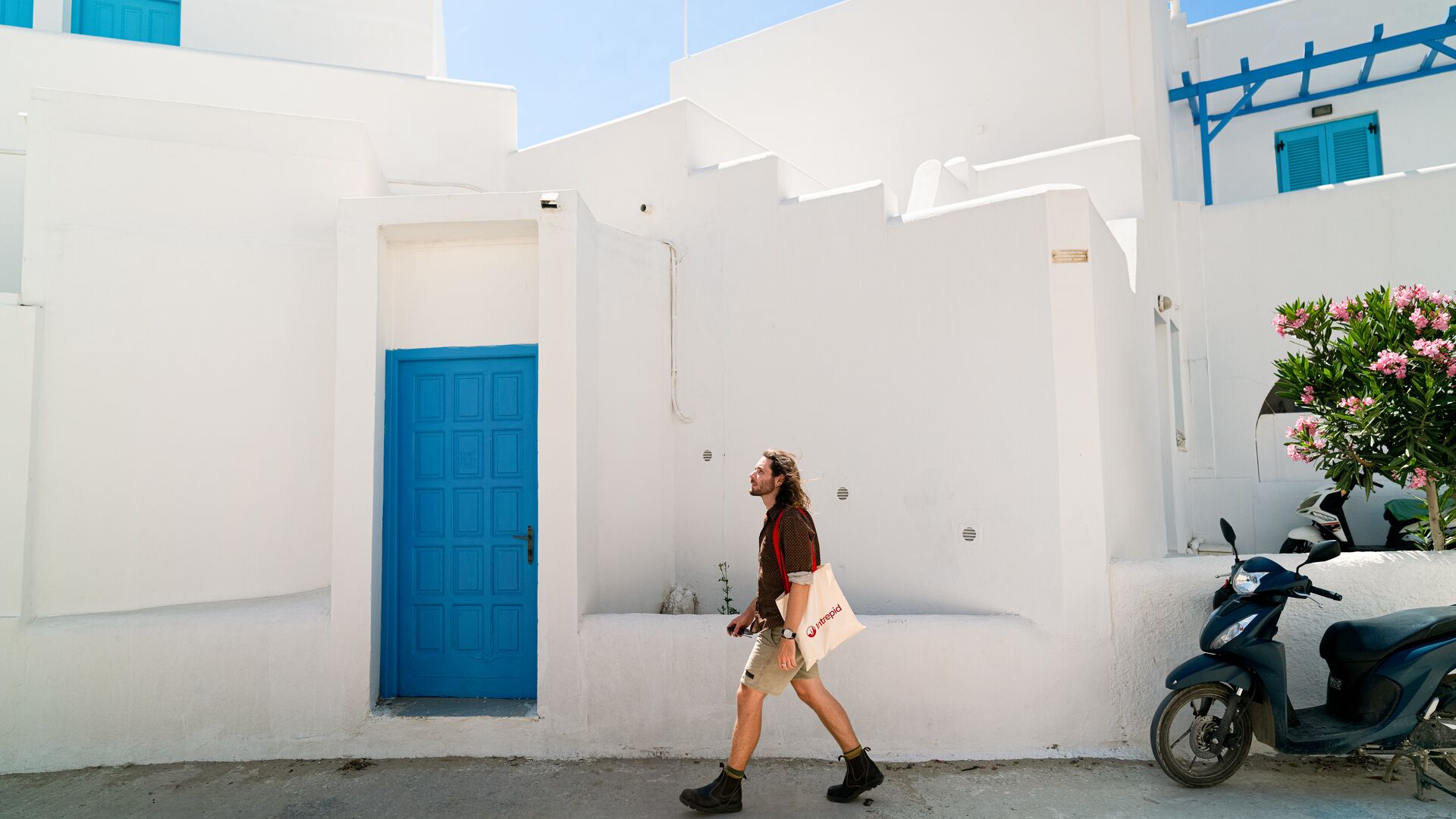
Plaka Beach, Naxos
Why we love the island: Naxos, the Cyclades’ largest island, is steeped in mythology. Zeus, king of the gods, is said to have grown up here in hiding from his ferocious father, while Dionysus, god of wine, loved the island so much he carpeted its fertile soils with vineyards. It’s also one of the archipelago’s most self-sufficient islands and is home to a well-preserved medieval town filled with a web of winding laneways, boutiques, tavernas and homes.
Why we love this beach: At four kilometres long, sprawling white-sand Plaka offers ample swimming opportunities and a few bars and restaurants which serve snacks and drinks right on the beach. On the southern fringe, where farmland nudges the coast, you can snorkel and swim among schools of fish – including, if you’re lucky, sea turtles. There’s even a beach bar and restaurant (Tortuga) named in their honour.
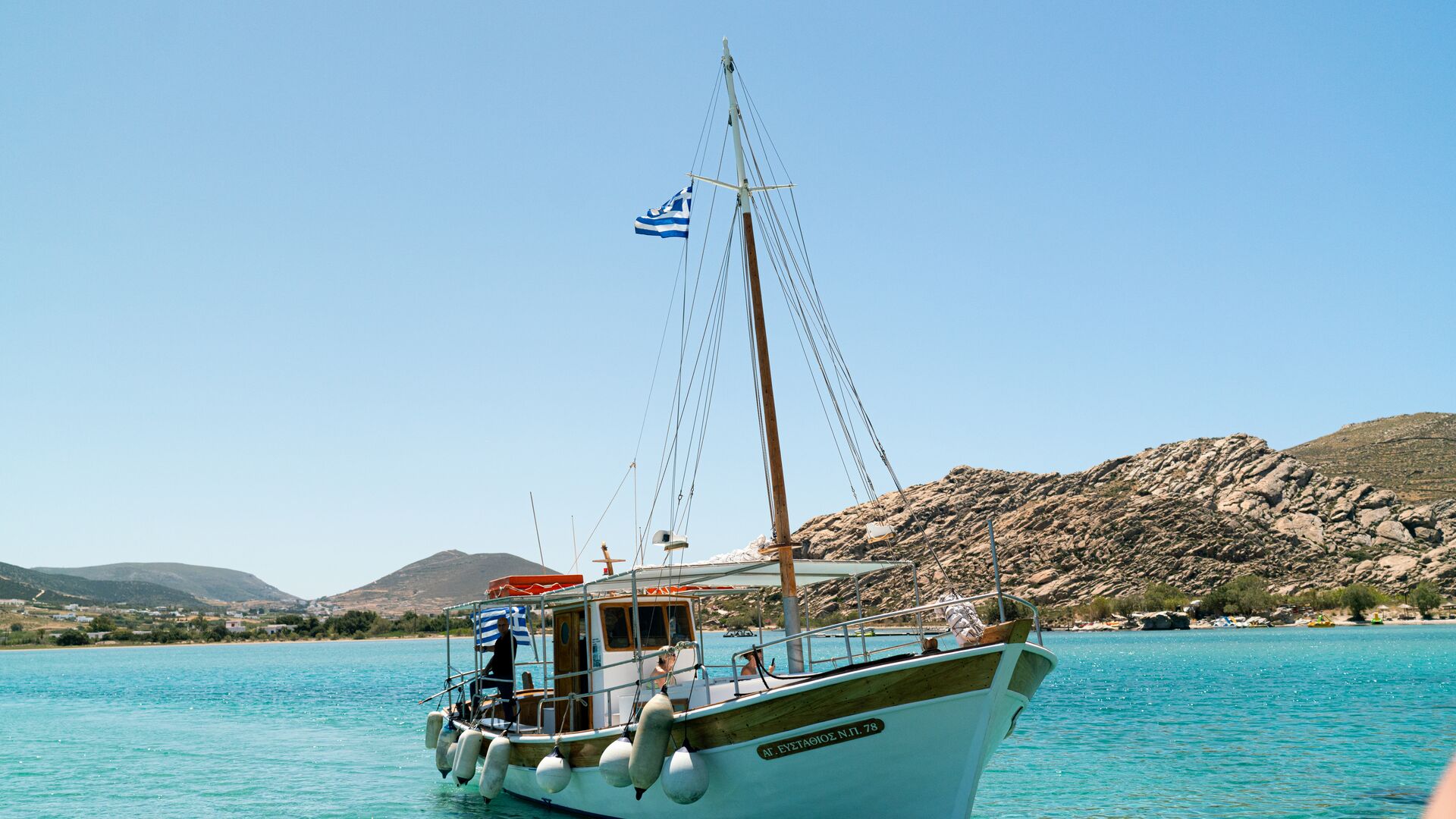
Golden Beach, Paros
Why we love the island: Often called a ‘mini Mykonos’, Paros shares a similar buzz but with fewer crowds. Head to the hills of Paros to explore the typical Cycladic towns of Lefkes and Marpissa, watch fishermen bringing in their catch at Naousa harbour, then kick back with a sundowner at a rooftop bar.
Why we love this beach: The north coast’s Kolymbithres Beach is the most famous (think swimming coves formed out of naturally sculpted rocks), but the 700-metre-long Golden Beach lives up to its name. It’s dotted with sunbeds, parasols and cafes, and is also one of the top windsurfing spots in the Mediterranean, thanks to the island’s prevailing winds.
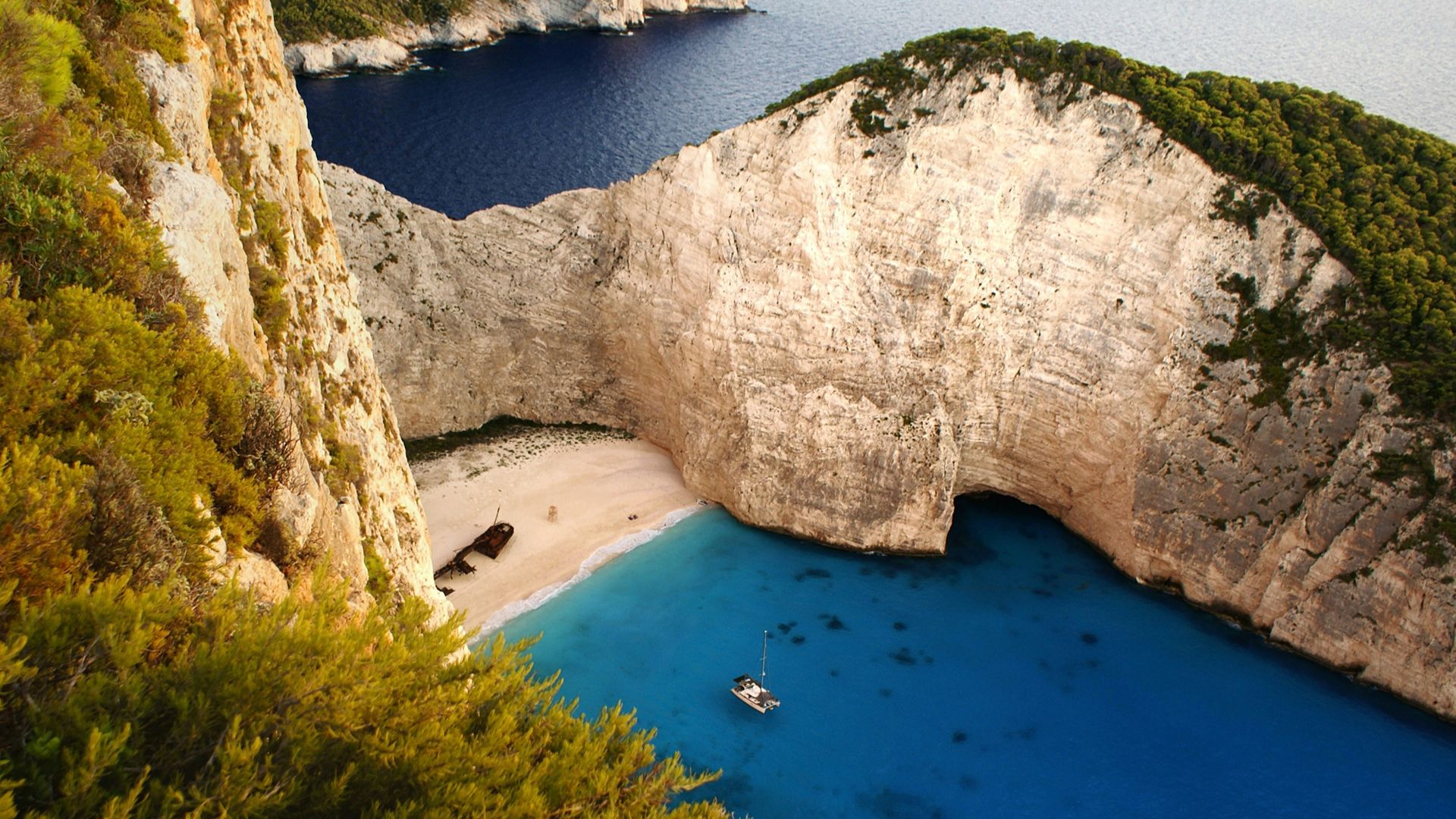
Navagio Beach, Zakynthos
Why we love the island: Zakynthos, also known as Zante, has a reputation for being a party place. But you don’t have to venture too far from the infamous Laganas Strip to see that Zante offers so much more, including mountains that rise from the coast, hilltop towns, sea caves and wineries.
Why we love this beach: Navagio, meaning ‘shipwreck’, is a secluded cove named after M/V Panagiotis – a smuggler ship that washed ashore in 1980 and now sits marooned on the sand. Reachable only by boat (from Agios Nikolaos or Porto Vromi), the beach is flanked by limestone cliffs and electric blue waters on either side of the rusting wreck giving the whole place an otherworldly vibe.
Galissas Beach, Syros
Why we love the island: Syros is one of those rare Greek islands that hasn’t been overrun by adoring tourists. As the Cyclades’ administrative capital, travellers tend to pass through on their way to more popular islands, so the beaches here aren’t too crowded. It’s worth spending some time in Ermoupoli, the island’s capital, to explore the neoclassical architecture, pastel-painted mansions and waterfront lined with restaurants and bars.
Why we love this beach: Galissass ticks all the boxes: golden sand, a few seaside tavernas and calm, shallow waters thanks to its enclosed location. If you get itchy feet, walk up to the chapel on Agia Pakou hill to the left of the beach for a great view of Syros and the surrounding mountains.
Red Beach, Santorini
Why we love the island: Marmalade sunsets draw in crowds on Santorini, alongside the island’s white-washed villages and volcanic cliffs. Yes, it’s one of the busiest places in Greece, but there are still quieter pockets if you know where to look. Break up your beach time with a hike along the island’s dramatic caldera, soak in the volcanic hot springs or try Assyrtiko – a local dry white wine – at a family run winery.
Why we love this beach: Thanks to its volcanic history, Santorini has a striking blend of black, white and red-sand beaches. Perissa, Vlychada, Perivolos or Agios Georgios are all scenic sunbathing spots, but for the ultimate backdrop, head to Red Beach – a pebbly strip flanked by rust-toned cliffs that reach up to 300 metres. Due to regular rockfall, the safest way to see it is by boat – how about a sailing trip around the Cyclades, stopping for sea swims and sunsets from the deck?
Launch your next adventure with Intrepid to explore the seas and shores of Greece.
Originally published in September 2017.

